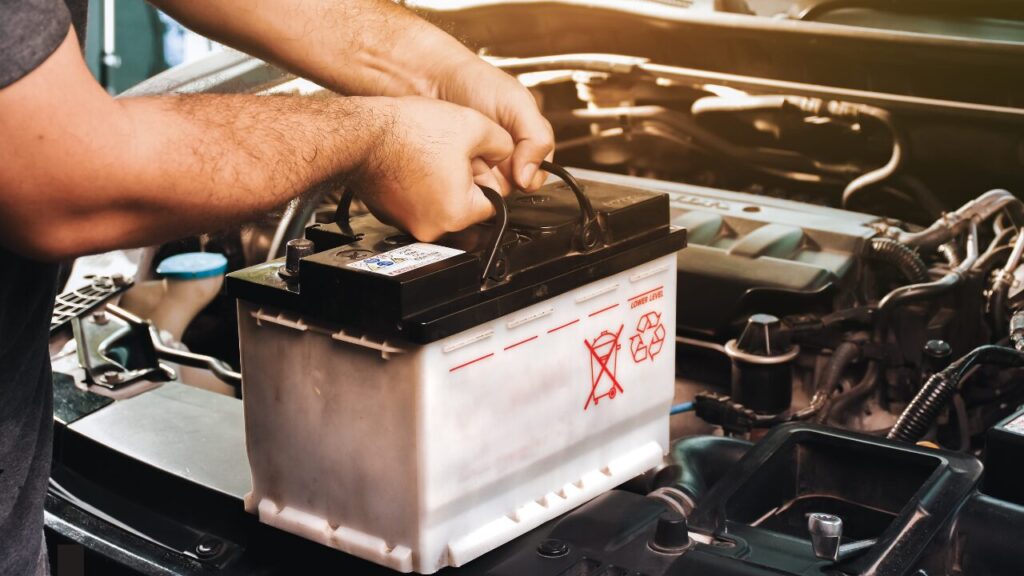The global push toward clean energy has accelerated the demand for advanced energy storage solutions. At the core of this revolution are Battery Manufacturers, playing a pivotal role in reshaping how we generate, store, and consume electricity. Positioned at the heart of renewable integration, battery manufacturers are not only enabling grid stability and EV expansion but also propelling industrial innovation across sectors.
The Evolving Role of Battery Manufacturers in Modern Energy Systems
Battery manufacturers are no longer just suppliers of power solutions; they are now strategic enablers of a sustainable future. As the demand for energy independence and decarbonization intensifies, manufacturers are meeting the moment with cutting-edge technology, scalability, and efficiency.
From Traditional Applications to Modern Necessities
Historically, batteries were confined to small-scale applications such as portable electronics. However, the emergence of electric vehicles (EVs), smart grids, and renewable energy farms has vastly expanded the scope. Battery manufacturers have responded by developing energy-dense, safer, and more affordable storage solutions.
Integration with Renewable Energy Sources
Wind and solar energy are inherently intermittent, requiring reliable energy storage to stabilize supply. Battery manufacturers now focus on systems that offer high cycling stability and quick response times to buffer these fluctuations, making renewables more dependable and scalable.
Leading Technologies Developed by Battery Manufacturers
Innovations in chemistry and design have redefined the battery landscape. From lithium-ion to emerging solid-state and sodium-ion technologies, battery manufacturers are in a continuous race to lead the next big shift.
Lithium-Ion Dominance
The most widely used energy storage chemistry today is lithium-ion. Its high energy density, longevity, and cost-effectiveness make it a popular choice for EVs and residential systems. Top battery manufacturers have streamlined lithium-ion production to meet global demand efficiently.
Solid-State Batteries
This next-generation solution replaces the liquid electrolyte with a solid material, reducing the risk of fire and enhancing energy density. Many battery manufacturers are investing heavily in R&D to bring solid-state batteries to commercial viability, promising major performance leaps.
Sodium-Ion and Other Alternatives
To diversify raw material dependency and reduce costs, battery manufacturers are exploring sodium-ion, zinc-air, and other chemistries. While these are in early stages, they show immense potential for large-scale applications.
Key Global Battery Manufacturers Leading the Charge
Battery manufacturers are spread across Asia, Europe, and North America, with some dominating global market share and others rising rapidly through technological disruption.
Asian Powerhouses
Companies from China, Japan, and South Korea account for a significant portion of global battery supply. Leading names such as CATL, LG Energy Solution, and Panasonic have set industry benchmarks in performance, pricing, and scale. These battery manufacturers fuel everything from electric cars to massive grid-scale installations.
North American Growth
Tesla’s Gigafactory partnership with Panasonic and emerging American firms such as QuantumScape are reshaping the U.S. battery landscape. American battery manufacturers are increasingly focused on domestic production, supply chain security, and innovation in solid-state batteries.
European Expansion
Europe is aggressively pursuing battery self-sufficiency with players like Northvolt and Britishvolt establishing large-scale facilities. These battery manufacturers are closely aligned with the EU’s green policies and electric vehicle boom.
Sustainability Commitments of Battery Manufacturers
Environmental responsibility is becoming a defining metric for battery manufacturers. Beyond product performance, manufacturers are now judged on how sustainably they operate.
Ethical Sourcing of Materials
The mining of cobalt and lithium poses ethical and environmental challenges. Leading battery manufacturers are shifting toward traceable and conflict-free sourcing, while also investing in alternatives to minimize dependency on controversial minerals.
Battery Recycling and Second-Life Applications
To address end-of-life concerns, battery manufacturers are deploying recycling technologies to recover valuable metals. Additionally, second-life battery applications for grid support and backup systems are gaining momentum, reducing environmental impact and maximizing lifecycle value.
Battery Manufacturers Enabling Electric Vehicle Growth
Electric vehicles rely entirely on high-performance batteries. Battery manufacturers are therefore crucial in EV adoption, offering better range, faster charging, and lower costs.
Increasing EV Range and Charging Speed
Battery manufacturers have engineered cells with higher energy densities, significantly boosting driving range. Parallelly, improvements in thermal management and power delivery have enabled ultra-fast charging capabilities.
OEM Partnerships
Battery manufacturers work closely with original equipment manufacturers (OEMs) like Tesla, BMW, and Hyundai to design vehicle-specific battery packs. These partnerships help optimize battery performance, safety, and integration with other vehicle systems.
Industrial Applications Powered by Battery Manufacturers
Beyond consumer and mobility use cases, battery manufacturers are driving innovation in industrial energy management, commercial storage, and off-grid systems.
Grid-Scale Energy Storage
As utilities shift to cleaner power sources, battery manufacturers provide the infrastructure for energy arbitrage, frequency regulation, and backup power. Massive battery farms, like those deployed in California and Australia, are prime examples.
Remote and Off-Grid Power
In regions with limited grid access, battery manufacturers supply robust, modular solutions that work with solar and wind installations. These systems are often critical in powering healthcare, education, and communications in underserved communities.
Data Centers and Critical Infrastructure
Battery manufacturers support uninterrupted operations for critical infrastructure like hospitals and data centers. Advanced uninterruptible power supply (UPS) systems with integrated batteries ensure smooth transitions during outages or voltage fluctuations.
Research, Development, and Future Trends
The most successful battery manufacturers heavily invest in innovation. The race to improve performance, safety, and scalability is ongoing, with several emerging trends set to redefine the future.
AI and Machine Learning in Battery Optimization
Battery manufacturers are utilizing AI for predictive analytics, enhancing battery management systems (BMS). This allows real-time diagnostics, efficient energy usage, and longer battery life.
Modular and Scalable Architectures
Flexibility is the future. Battery manufacturers are creating modular units that can be scaled based on application—from a single-family home to a nationwide utility provider.
Hydrogen-Battery Hybrid Systems
Some manufacturers are exploring hybrid systems where hydrogen fuel cells and batteries coexist to maximize power output and sustainability. These could redefine energy architecture for large-scale and mobile applications.
Battery Manufacturers and the Global Supply Chain
Supply chain stability is a critical challenge. Battery manufacturers depend on a reliable and ethical supply of raw materials, advanced manufacturing equipment, and consistent logistics.
Vertical Integration
To reduce dependency and cost, leading battery manufacturers are adopting vertical integration. They control everything from raw material processing to battery pack assembly.
Global Partnerships
Collaborations with mining companies, automakers, and tech firms allow battery manufacturers to secure essential inputs and develop customized solutions for various end markets.
Regulatory and Policy Support for Battery Manufacturers
Governments worldwide are recognizing the strategic importance of battery manufacturing. Policies and subsidies are now designed to support domestic production, research, and adoption.
Tax Incentives and Grants
Battery manufacturers in the U.S., EU, and parts of Asia benefit from tax credits, funding programs, and public-private partnerships aimed at expanding green manufacturing.
Carbon Neutral Targets
Many nations are enforcing stricter carbon emissions standards, indirectly pushing growth in clean battery technology. Battery manufacturers are key allies in achieving these climate goals.
The Future Outlook of Battery Manufacturers in a Net-Zero World
As the world races toward net-zero emissions, battery manufacturers will remain central to the energy transition. Their role in enabling clean transportation, decentralizing energy systems, and driving industrial efficiency cannot be overstated.
Innovations on the Horizon
Breakthroughs in graphene, silicon anodes, and advanced electrolytes promise even more efficient batteries. Battery manufacturers at the forefront of these innovations will likely dominate the next decade.
Emerging Markets
Demand is growing rapidly in emerging economies where infrastructure development is tied to sustainable energy access. Battery manufacturers who can offer low-cost, high-efficiency solutions will find massive opportunities in Africa, South Asia, and Latin America.
Conclusion
Battery manufacturers are not just components of the global energy shift—they are its catalysts. From fueling electric cars to stabilizing power grids and advancing industrial efficiency, battery manufacturers have redefined the boundaries of possibility in modern energy. With technological advancement, strategic partnerships, and a commitment to sustainability, they are setting the pace for a cleaner, smarter, and more resilient world.



